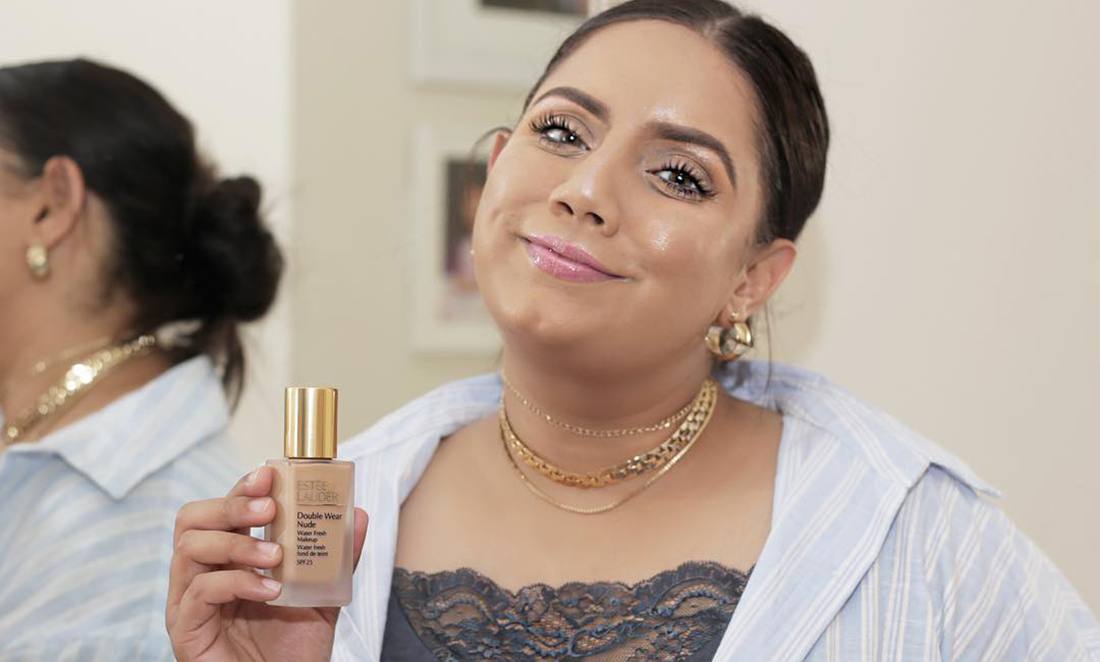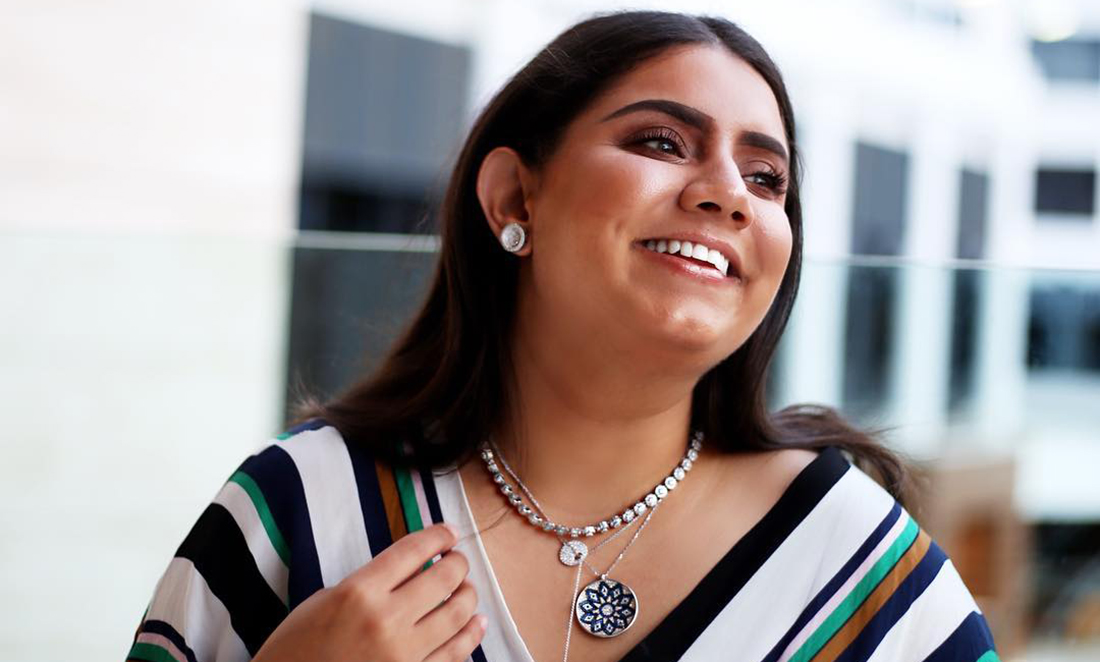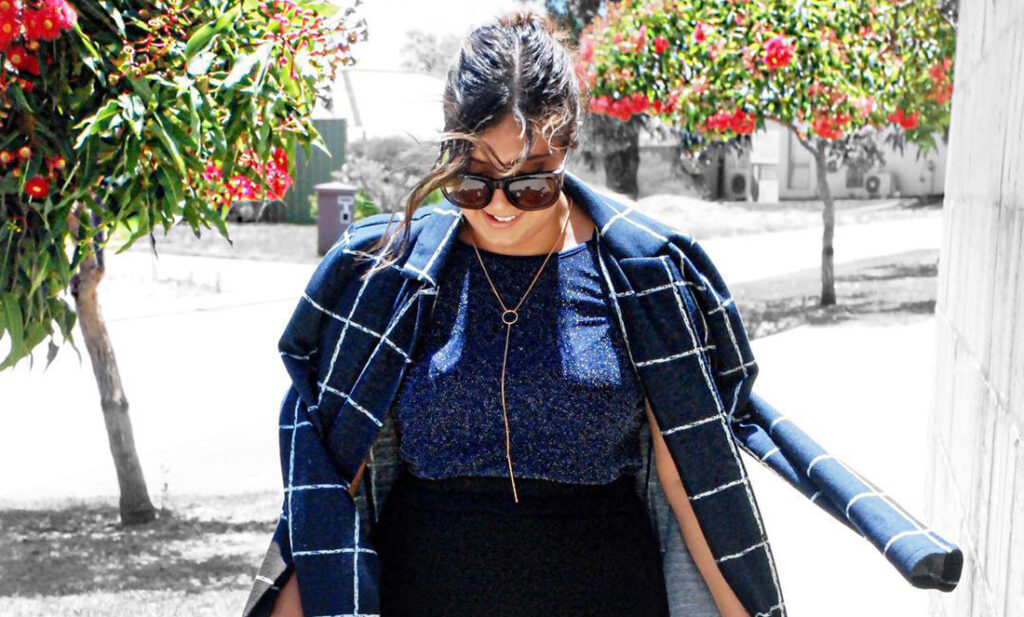Getting that first career job after graduation can feel like mission impossible.
You’ve got to find a way to stand out against all the other applicants as the most qualified and experienced candidate for the job.
Only there’s that old catch-22: you need experience to get a job, but you need a job to get experience.

But what if there were tools to help give graduates and young people a boost and even the playing field?
Social media consultant Sameera Afzaal says not only do these tools exist, but they’re right there, for free, at our fingertips.
She knows because she used them herself as a launch pad in her career. And she didn’t just get the job, she’s also been inspiring others to do the same.
An Instagram story
Let’s go back to when Sameera was an undergrad, studying a double major of PR and web communications with the School of Arts at Murdoch University.
For a young PR student, Instagram was an exciting platform where PR was being conducted in fresh, new ways. So she decided to sign up for an account to see how popular brands were leveraging it.
After some research, she felt ready to launch her own professional account. She found a niche providing fashion inspiration for young Muslim women. This was something she’d been passionate about since moving to a western country, where it was harder to find fashion inspiration that aligned with her religion’s dress code.
“I was sharing with an angle of my cultural background, so it was modest street style,” she says.
“That was something I knew I could bring to the table and that’s something my followers resonated with, and it kind of grew from there.”
By the end of her degree, Sameera had racked up an impressive 10,000 followers and gained valuable experience collaborating with global brands like Estée Lauder.
Not only did her account provide an income during her student years, it even opened doors for her after graduation.
“I just graduated, but I’m working in a role that I would’ve got 2 years after I graduated simply because I trained myself in skills that I would’ve learned on the job,” she says.

Hashtags to riches
Sameera’s story isn’t the only one like this. More and more young people are using social media and digital platforms to take destiny into their own hands.
It isn’t just Instagram. I recently discovered there are awards for the best YouTubers, Snapchatters and Twitch streamers.
Whatever the platform, these social influencers are being celebrated far and wide, and companies are paying attention.
This is great news for young people and graduates as it gives them a free platform to build their skills, practise their craft and even make an income.
You don’t even need a massive audience. Micro-influencers are thought to be the future of marketing, as their smaller, niche audiences tend to be more highly engaged.

The ones who make money do so mainly through sponsored posts. This is where a business will pay an influencer either monetarily or with products to spruik their products or services.
“Sometimes, brands, when they see that their messaging or their campaigns align with what you’re sharing … they’ll get in touch personally, and that’s where you can negotiate what your value is,” Sameera says.
People with a little entrepreneurial hustle may make money selling their own products through social media. A former co-worker of mine astounded our team when she announced she was jetting off to New York Fashion Week after her swimwear range, Ete Swimwear, found instant success on Instagram.
If your content is video or podcast, there are ways you can have your audience support your work. You can charge subscriber fees or request pledges through platforms like Patreon.
There’s no guarantee you’re going to make the same millions as this 6-year-old who reviews toys, but when you’re a poor student, any extra bit of pocket money helps.
And even if your blog, feed or channel never makes a cent, it may still reap other rewards.

Building a post-folio
So back to that first conundrum: how does this help young people gain the work experience they need to land a job?
If you’ve planned and shared content that aligns to a specific goal or message, guess what? You’ve just demonstrated some serious strategic thinking skills.
Been working to a particular aesthetic? I’d say you have a good eye for detail. Writing your own blog? You’ve been building your written communication skills.
In The Foundation for Young Australians’ most recent report, they predict that a 15-year-old today will have what they call a portfolio career, which is a mix of multiple part-time, temporary, freelance or self-employed jobs. They may work for themselves or others or both, all while collaborating with people on the other side of the world.
Their research found most young people weren’t prepared for this shift. But social media could be the perfect platform, as it allows you to experience self-employment and global collaborations.
Your Instagram, YouTube or blog could become a great résumé builder or act as a portfolio when applying for jobs. As long as it’s safe for work of course.
“If you can show that you’ve thought through something and that idea comes across simply through your imagery or your videos or whatever you’re sharing, it shows how strategic you can be,” says Sameera.
“That’s invaluable to any agency.”
Sameera admits that she and other people she’s known have got jobs using their social media pages.
“I know so many people internationally who build Instagram brands that became social media influencers during their time studying and from that were offered jobs,” she says.
“Similar to me, I built up a social media following, and from that it brought me in job opportunities.”

How to win followers and influence people
Feeling inspired but don’t know where to start? Sameera’s number one piece of advice is to just find your niche and start from there.
“Just pick one thing! If it’s fashion, pick that, do that. If it’s food that you’re into, pick that, do that. And then from that, other things will develop out of it naturally,” she says.
“Try to make a consistent brand, keep it cohesive, keep to the same messages. That’s really how you get into a niche: sticking to the one thing and then developing everything else through that.”
This is bad news for indecisive people like me who consider themselves science communicators, food connoisseurs, make-up buffs and very, very amateur singers. But if you do manage to find your one true calling and enough people get behind you, you might get the chance to share your way to success.












